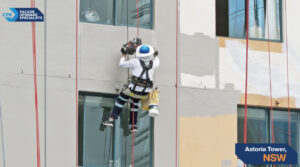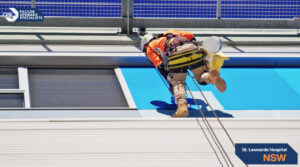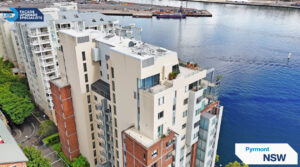Strata buildings across New South Wales (NSW) are increasingly facing the need for facade remediation. Issues like concrete cancer, combustible cladding, water ingress, and ageing structures all play a role in how much these projects cost. For owners corporations, strata managers, and consultants, understanding the factors influencing the cost of strata facade remediation in NSW is essential to make smart, informed decisions.
Why Costs Differ So Much
The strata facade remediation cost in NSW is never the same across two projects. A small low-rise building may need basic waterproofing, while a high-rise tower in Sydney with combustible cladding could face multimillion-dollar works. Costs are influenced by the building’s age, the materials used, and the remediation approach chosen. Committees also need to consider capital works fund planning and DBP Act compliance to ensure projects are fully covered.
Scope of Works and Facade Condition Assessment
The starting point is always a facade condition assessment in NSW. Remedial engineers or facade consultants carry out inspections that highlight the extent of repairs needed. Some projects only require joint resealing or minor patching, while others involve large-scale concrete repairs, cladding removal, or even full window replacements. Heritage-listed buildings add another layer of complexity. While assessments come with a cost, they save money in the long run by preventing unexpected variations.
Access Methods: Scaffold, Rope Access, or Mast Climbers
Access is often one of the largest cost drivers. Traditional scaffolding is reliable but can represent 20–40% of the project budget, particularly on high-rise towers. Rope access (Upseiling®) using Scaffold-Free™ systems such as MARS™ and PEARS® is far less intrusive and significantly more affordable. Mast climbers are an option for certain large, repetitive works but still carry setup costs. Choosing the right system directly affects pricing, disruption levels, and project timelines.
Combustible Cladding Replacement
For many NSW buildings, combustible cladding is a major issue. Costs vary depending on the amount of cladding, the replacement materials chosen, and the need for a fire engineer report. Compliance with the DBP Act adds further costs for design and certification, but these steps are mandatory. In Sydney, cladding remediation projects can cost tens of millions, especially for high-rise towers.
Heritage Facade Remediation
When it comes to heritage facade remediation in NSW, projects are usually more expensive. This is due to specialist trades, handcrafted materials, and strict heritage compliance. Council approvals also add to timelines and budgets. While costly, heritage works preserve long-term value and can sometimes be supported by grants or incentives.
Waterproofing and Facade Leaks
Leaks are one of the most common complaints in strata buildings. Remediation may involve joint sealing, membrane installation, or balcony waterproofing. If issues are left too long, they often lead to structural problems that multiply costs. Factoring in waterproofing and facade leaks early prevents emergency levies and future damage.
Engineering, Design, and DBP Act Compliance
Engineering and compliance requirements are another layer of cost. The remedial engineering design in NSW process includes engineer reports, fire safety documentation, independent design certification, and regular inspections. These requirements may feel like extra expenses, but they protect owners corporations against defects and ensure all works meet regulatory standards.
Tendering and Contractor Selection
Tendering can affect the final price by as much as 30%. Committees should always gather multiple tenders, review contractor credentials, and compare methodologies—particularly scaffold vs rope access cost. Clear contracts that outline inclusions and exclusions reduce the risk of budget blowouts. Working with experienced and accredited remedial contractors in NSW provides long-term security.
Levies and Capital Works Fund Planning
Funding is always a sensitive issue. Owners corporation levies for remediation can be raised through special levies, existing capital works funds, or strata loans. Committees that plan their capital works fund in advance are better positioned to manage costs without imposing sudden financial pressure on owners.
Location, Height, and Complexity
The building itself impacts cost. Taller towers require more complex access and safety measures, while projects in the Sydney CBD face higher logistical costs. Irregular building designs, curtain walls, or mixed materials add another layer of difficulty and expense.
Project Duration and Resident Disruption
Longer projects cost more, not just in labour but also in the inconvenience caused to residents. Delays from poor planning or unsuitable access methods can inflate budgets. Using systems like SkyPod® workstations helps speed up delivery while keeping disruption to a minimum.
How CPR Facade Upgrades Keeps Costs Down
At CPR, we use Scaffold-Free™ technologies like MARS™, PEARS®, and SkyPod® to significantly reduce access costs and project durations. Our quality assurance systems—ASP’s™, SFS360®, and SE2EPC®—ensure that every job is scoped, documented, and executed to the highest standards. From combustible cladding replacement to heritage facade remediation, we provide complete end-to-end solutions tailored for NSW strata buildings.
Learn more about our Facade Remediation and Preservation services.
Explore our Concrete Repairs and Durability Solutions.
Conclusion
The factors influencing the cost of strata facade remediation in NSW go beyond materials and labour. From access methods to DBP Act compliance and capital works planning, each element shapes the final cost. By working with experienced professionals and planning ahead, strata committees can protect their buildings, avoid costly surprises, and achieve long-term value.






